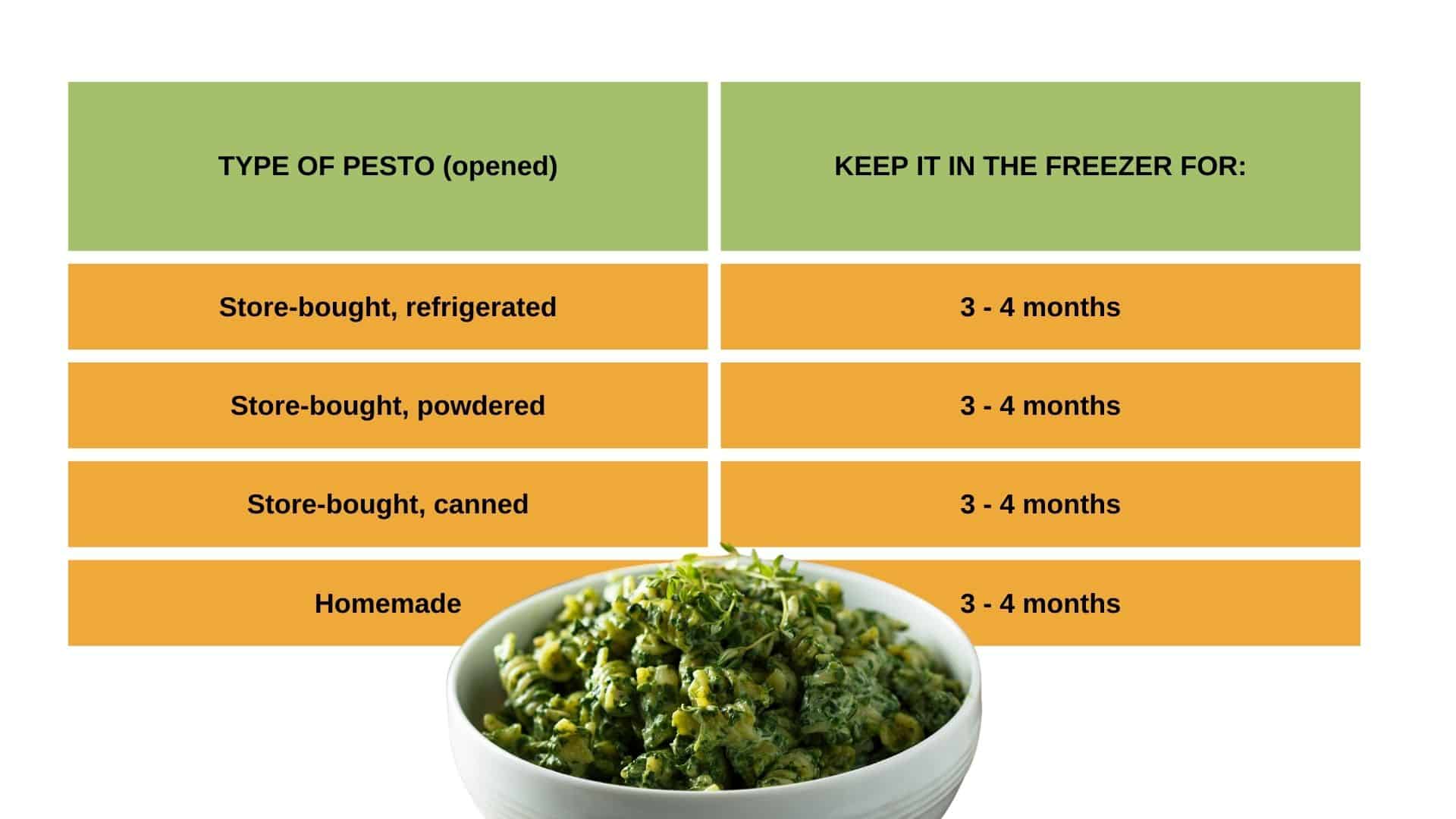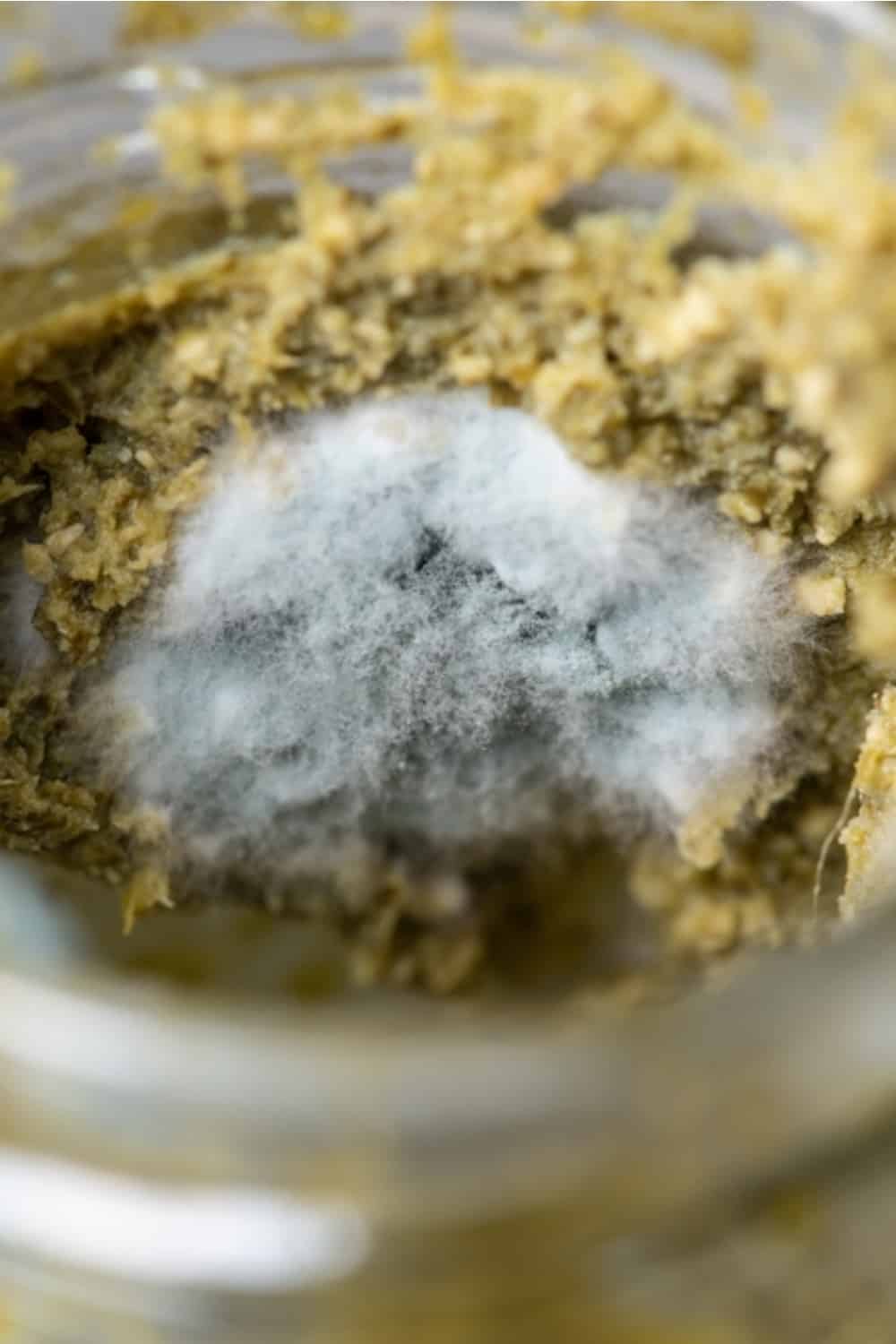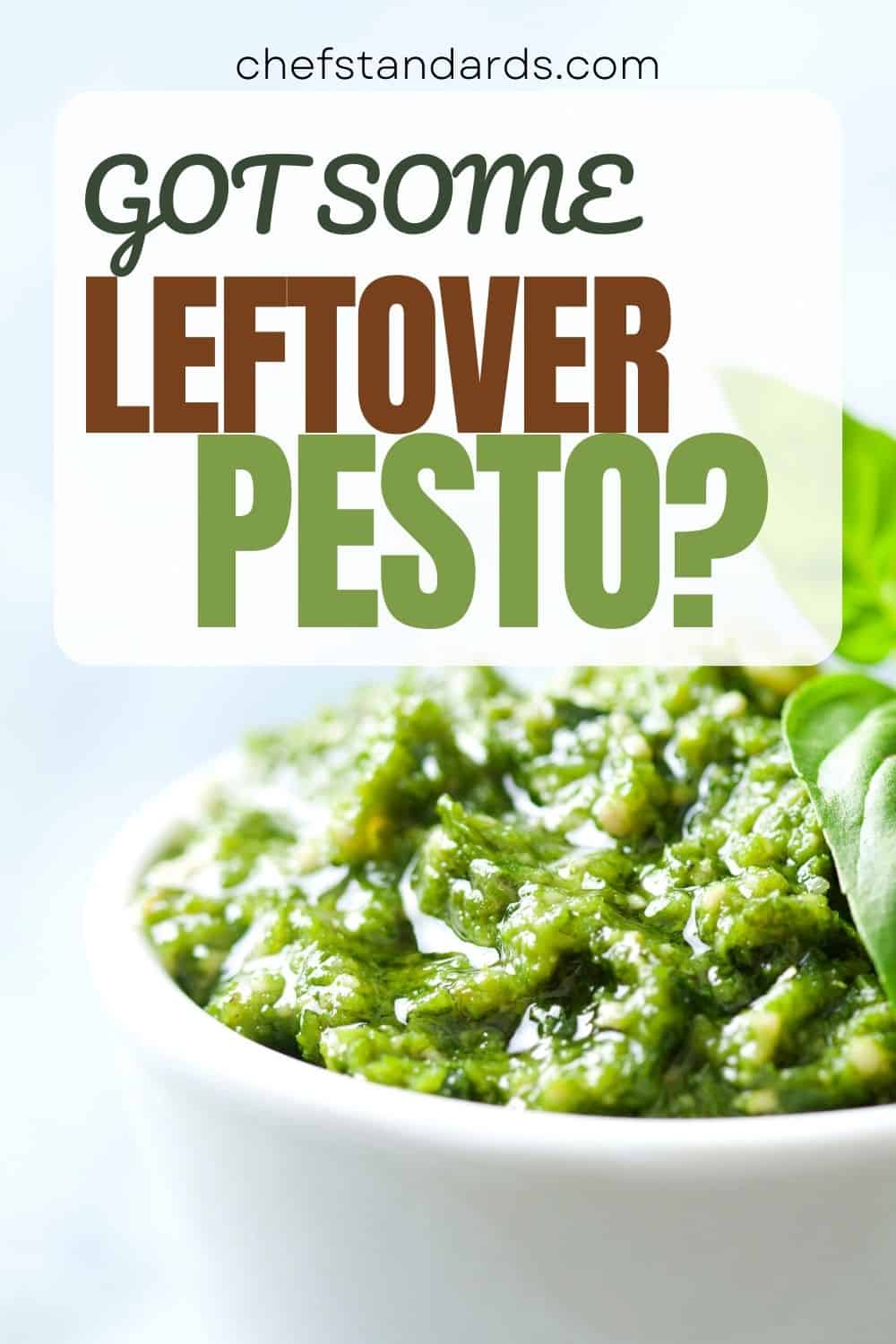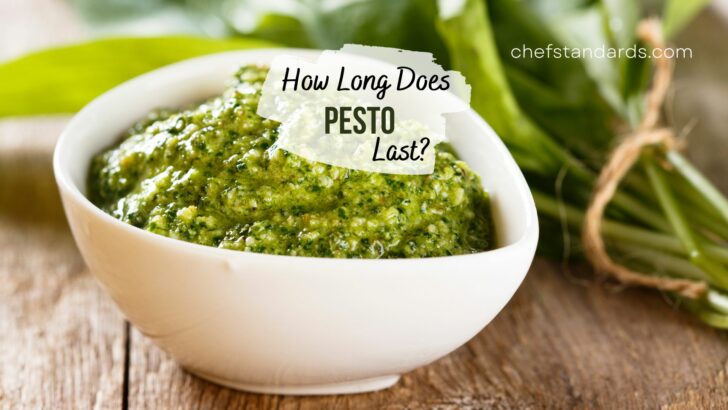Imagine buying pesto sauce and keeping it too long in the fridge after opening. Now imagine the disappointment on my face once I’ve realized that this actually happened to me. It wouldn’t be that big of a deal if I weren’t expecting guests.
I always say that the best way to learn things is by making mistakes. I’m not really happy about the “pesto situation” but I’m happy about sharing everything I learned about pesto shelf life with you today.
Here you go:
How Long Does Pesto Last In The Fridge After Opening?
According to the National Center For Home Food Preservation, homemade pesto should be stored in the fridge for no longer than 3 days. Depending on its form, here’s how long pesto lasts in the fridge after opening:

How Long Does Pesto Last In The Freezer After Opening?
We all know that the best way to extend pesto shelf life is by simply freezing it. This way you can freeze pesto for a couple of months:

How To Extend The Shelf Life Of Pesto
Following these simple tips can significantly extend the shelf life of your pesto sauce:
• Unrefrigerated pesto: Keep it in a cool and dry place. After opening, seal the container tightly so that it doesn’t get exposed to air. Pro tip: Top the jar with olive oil to prevent exposure to air.
• Refrigerated or homemade pesto: Remember that refrigerated pesto will last longer than unrefrigerated one. After opening the pesto, seal the container tightly and top the jar with olive oil to prevent spoilage and exposure to air.
• Frozen pesto: Pack the pesto sauce into freezer bags or freezer-safe containers. Put a label on the freezer-safe container or freezer bag so that you can track how long it should be kept in the freezer.
Just In Case: 4 Signs Pesto Has Gone Bad

Pesto is usually made of fresh basil, pine nuts, garlic, and oil. These ingredients are perishable and can go bad if the sauce is not stored properly. That being said, here are some surefire signs that pesto has gone bad:
1. Color
You can be sure the pesto has gone bad if the color of it changes from green to brown or black. This often happens when the pesto is exposed to heat or if it has been left open for too long. Remember that you should not consume it if it has become brown or darker.
2. Mold
Other signs that pesto has gone bad include a change in texture and the appearance of mold growth on the surface of the sauce. You should not consume pesto if any mold growth is seen on the inner surface of the jar. Look for the same spoilage sign when checking whether the cream of tartar has gone bad.
3. Smell
The rotten smell is one of the first signs that pesto has gone bad. The smell of fresh basil should be detectable in the pesto, but if it smells like vinegar or something else, it’s time to throw it away.
4. Past use-by date
Last but not least, pesto can go bad if it is stored unrefrigerated, in the fridge, or in the freezer for too long (see above). Pesto can also go bad if you use it after the use-by date provided on the jar.
BONUS: 3 Simple Ideas For Leftover Pesto
The best-by date is nearing for your bought pesto, or is it that you made your own homemade batch, but you have too much leftover? Worry not, here are a few ideas on how to use leftover pesto:
• Use it in cooking: Add it to pasta or pizza sauce, use it as a dip for breadsticks, mix it with mayonnaise and use as a sandwich spread, or add it to scrambled eggs or omelets.
• Freeze pesto: Freezing pesto is a great way to preserve the flavor of summer. It’s also a great way to use up all those basil leaves that are taking over your garden. It’s easy and quick, and you can put it into large freezer bags, so you’ll have plenty of pesto to defrost for the winter months.
• Ice cube trays: Freeze your pesto as ice cubes in your freezer, perfectly ready for that stew or pasta dish. Just pop one out and let it thaw while cooking.
That’s it, folks! 😎


